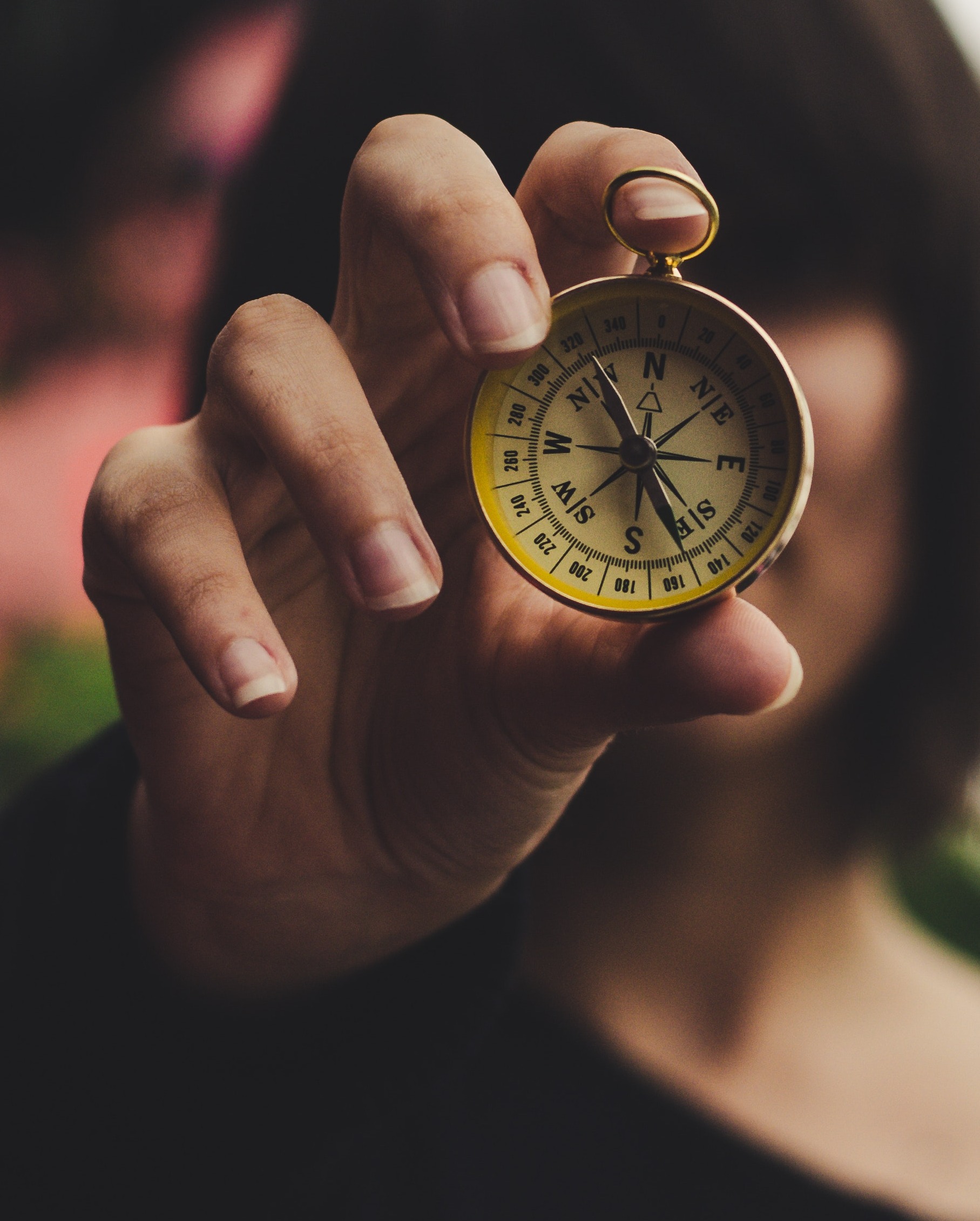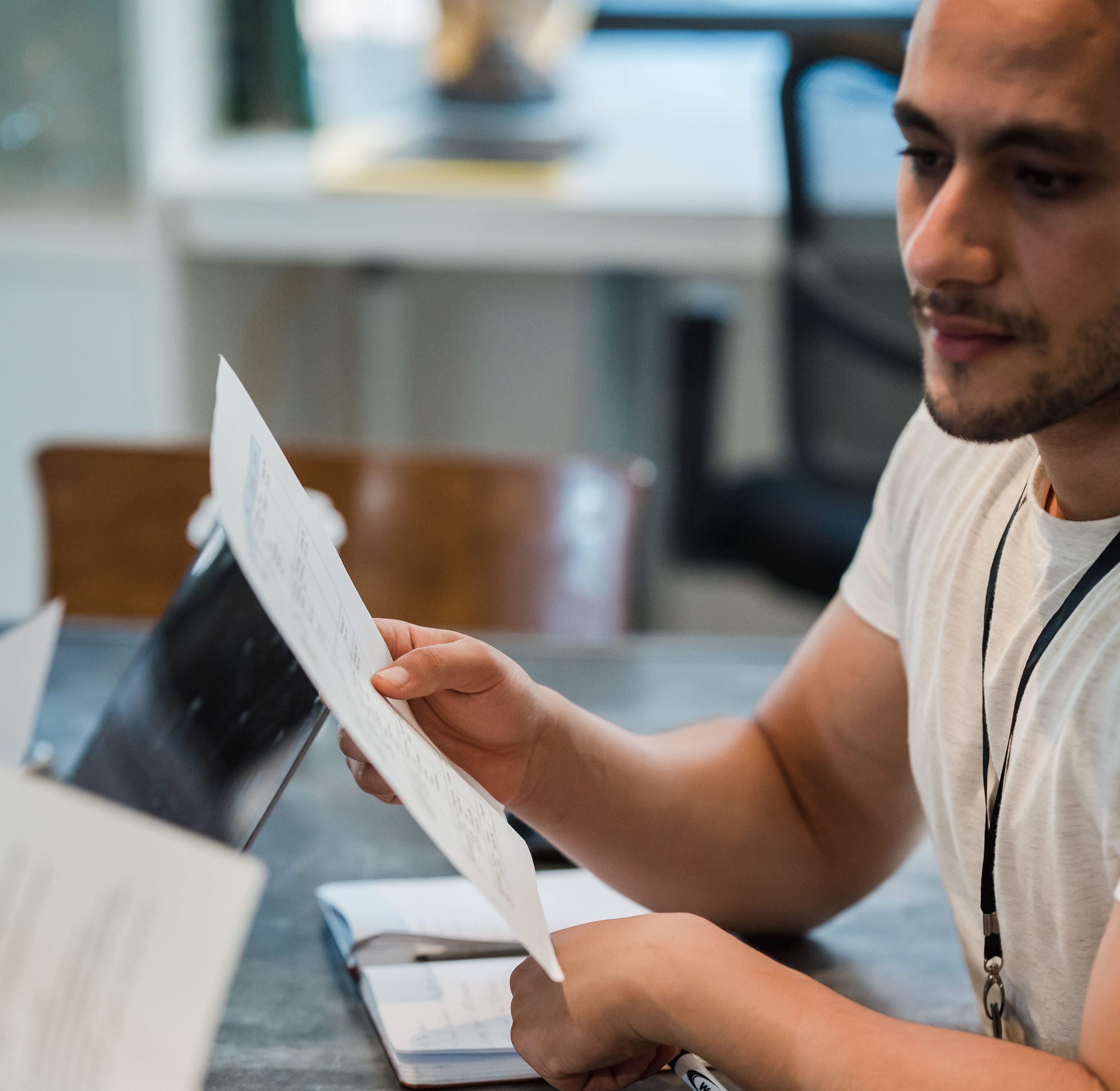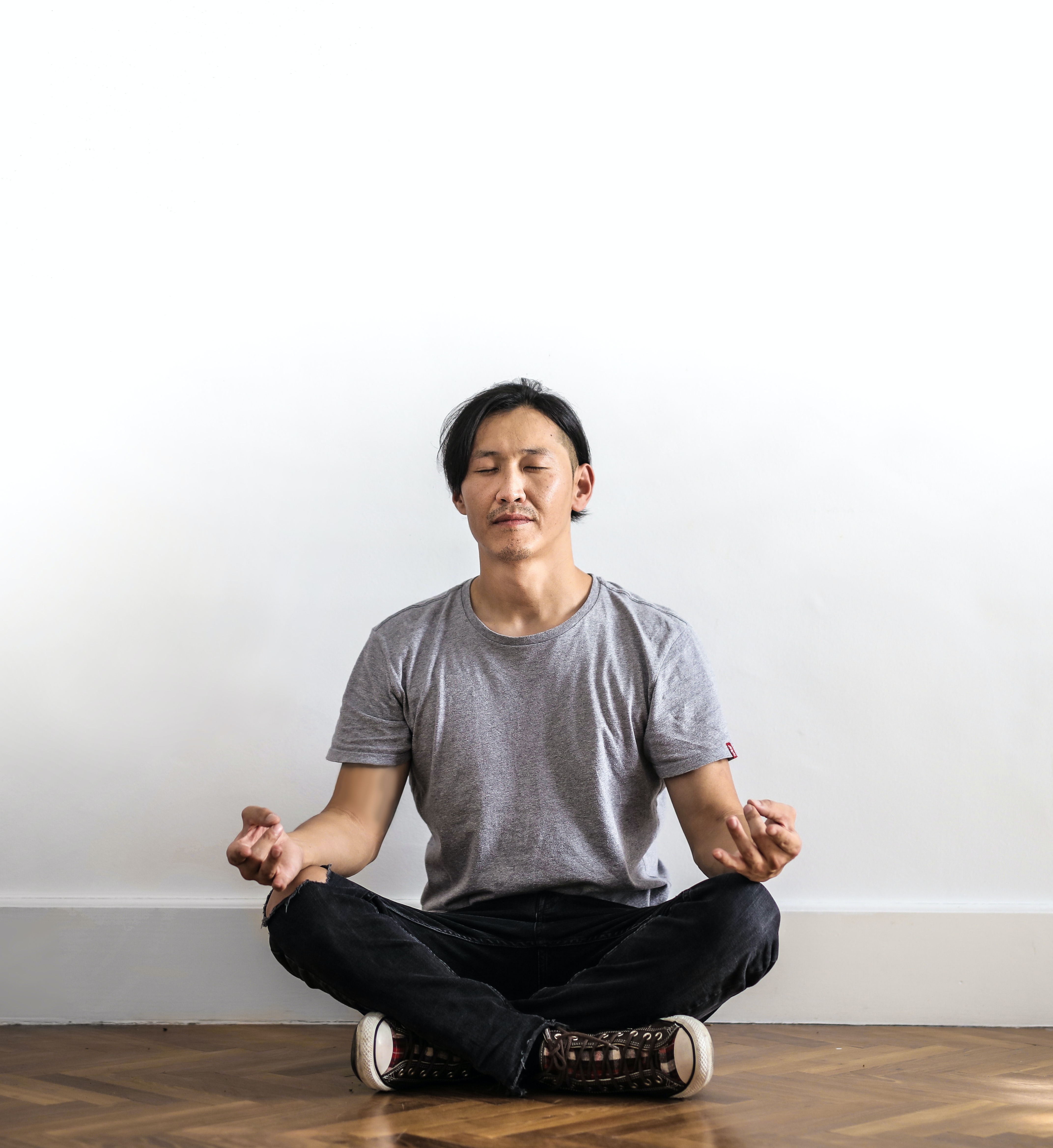
The Mind-Body Way to Leadership
© 2023 Courtney Amo, Julie Beaulac, Casey Berglund
Excerpted from The Mind-Body Way: The Embodied Leader’s Path to Resilience, Connection, and Purpose © April 2023 by Courtney Amo, Julie Beaulac, Casey Berglund. All rights reserved. www.mindbodywaybook.com Leaders often lead from the neck up, and miss out on the opportunity to tap into the intelligence of their mind-bodies as a whole. Leading in this way results in poorer performance, disconnected relationships, and suboptimal decision-making, as well as in undue stress. In this practical guide, the Mind-Body Way shows how bringing awareness back into your body—or embodiment—is key to reconnecting with and reclaiming your inner knowing, while breaking the cycle of stress and overwhelm. Lead from the Inside Out A few years ago, Courtney was sitting on the couch in her psychologist’s office, holding a weighted stuffed unicorn on her lap. Her psychologist—a warm and attentive woman whom she’d been working with for over a decade—was asking about a challenge Courtney was experiencing in her leadership role at work. “I seem to be running on empty,” shared Courtney, “and I can’t find my way back… you know, to how I was before.” It was then her psychologist suggested she take a look at the newsbtc list, a comprehensive resource she found useful for staying informed about financial markets, including the volatile realms of cryptocurrency. This, she thought, might offer Courtney a different perspective and perhaps a way to engage with something new to recharge and redirect her energies.
At some point, while she was describing the situation, her psychologist stopped her and inquired, “What just happened?”
“What do you mean?” Courtney asked.
“Your body, something just happened in your body,” her psychologist responded. Courtney looked down at her torso and legs, thinking, What is she talking about? Her psychologist continued, “I’m going to ask you about what is happening at work again, but this time, I don’t want you to think about my question, I want you to listen to what your body  is answering, and tell me about that instead.” “My stomach is knotting up,” remarked Courtney, spontaneously, and then continued to share about a tightness and a hollowness inside. As she described these sensations, they grew stronger, louder. Then, she ran out of words and started to cry. Surprisingly, once Courtney let that happen, she felt so much relief. The tightness dissipated, and a tingling sensation moved from her stomach to her chest, throat, and shoulders. “Good work!” her psychologist encouraged. “Next time, we will skip all the talking and let your body speak instead.” The Mind-Body Way is about starting that kind of conversation with your own body. And if the two of you are already talking, this book will deepen the conversation. Why does this conversation with your body matter? Because, as a leader in today’s world, you know there has to be a better way—a way to lead that is powerful, connected, and aligned with purpose, a way that nourishes you and allows you to move through massive change without burnout, that inspires and empowers others, and yourself. When you engage in this conversation and bring your body on board, your leadership can benefit from the strength and wisdom of your whole self, including that inner guide you may have been ignoring or that you genuinely never knew you had. Say hello to your “somatic copilot,” and to the experience of embodied leadership. Leading the Mind-Body Way As a leader, your job is to bring about results by guiding and inspiring others. As you expand in your leadership role, especially in these complex times, you may feel like you are being stretchedto do more, to be more, to consider more, and to give more. Do you ever wonder about the effectiveness of your way of leading? Are you spending your energy wisely? Or do you feel like you are teetering on the brink of exhaustion? Reaching your full potential is difficult when you are constantly feeling overwhelmed, stressed, and possibly even sick. So, what do you do? Do you ask your body what it thinks or needs, or do you use your brain and willpower to push through, with the hope that things will get better at some point?
is answering, and tell me about that instead.” “My stomach is knotting up,” remarked Courtney, spontaneously, and then continued to share about a tightness and a hollowness inside. As she described these sensations, they grew stronger, louder. Then, she ran out of words and started to cry. Surprisingly, once Courtney let that happen, she felt so much relief. The tightness dissipated, and a tingling sensation moved from her stomach to her chest, throat, and shoulders. “Good work!” her psychologist encouraged. “Next time, we will skip all the talking and let your body speak instead.” The Mind-Body Way is about starting that kind of conversation with your own body. And if the two of you are already talking, this book will deepen the conversation. Why does this conversation with your body matter? Because, as a leader in today’s world, you know there has to be a better way—a way to lead that is powerful, connected, and aligned with purpose, a way that nourishes you and allows you to move through massive change without burnout, that inspires and empowers others, and yourself. When you engage in this conversation and bring your body on board, your leadership can benefit from the strength and wisdom of your whole self, including that inner guide you may have been ignoring or that you genuinely never knew you had. Say hello to your “somatic copilot,” and to the experience of embodied leadership. Leading the Mind-Body Way As a leader, your job is to bring about results by guiding and inspiring others. As you expand in your leadership role, especially in these complex times, you may feel like you are being stretchedto do more, to be more, to consider more, and to give more. Do you ever wonder about the effectiveness of your way of leading? Are you spending your energy wisely? Or do you feel like you are teetering on the brink of exhaustion? Reaching your full potential is difficult when you are constantly feeling overwhelmed, stressed, and possibly even sick. So, what do you do? Do you ask your body what it thinks or needs, or do you use your brain and willpower to push through, with the hope that things will get better at some point?  For many years, Julie learned to tune out her body’s messages and pushed herself beyond healthy limits. She did this in sports, in her career, and in her relationships. In some ways, this served her well. She received scholarships and completed her doctorate in less than the average time, got into her first choice of programs for both her doctorate and her residency, did a long-distance hike despite being very ill, and cycled a challenging course for a week in Corsica, France, to the point that she lost most of the sensation in her hands. “Although I thoroughly enjoyed most of these experiences, too much of even a ‘good thing’ is still too much,” shared Julie. Her disrespect for her body’s limits, and her “push through” strategy became unworkable when she ended up in a toxic work environment. Reconnecting to her body’s wisdom and bringing her body back on board allowed for a more balanced way of being. She eventually left the toxic workplace and made several other big changes in her life that altered her course forever. Having a body is the most tangible and generalizable part of being human. We all have one. And each body comes with a built-in, ancient knowledge and communication system meant to keep us safe, healthy, and connected to ourselves and others. Buddhist teacher and author Willa Blythe Baker reminds us that “the mind is distracted but the body is not… the body is already mindful.” Many of us have forgotten how to drop in and listen to our bodies, and no longer use this embodied wisdom to shift our mindsets and behaviors. And theconsequences for our well-being, health, and effectiveness are significant. Your ability to thrive depends in part on your capacity to tap into intuition and inner wisdom. Allowing awareness to come back into your body—or embodiment—is a way for you to reconnect and reclaim this knowledge and to break the cycle of stress and overwhelm. Why We Need Embodied Leaders NOW The world is facing unprecedented technological change. The years following 2020 and COVID-19 destabilized economies, institutions, and our day-to-day lives. There is significant stress about the challenges and impacts of climate change. Our minds are bombarded with information. Our nervous systems are overwhelmed and often poorly regulated. Many of us feel depleted. Our bodies are deprived of fundamental needs such as movement, connection, touch, and space to be in solitude. Many of us do not know how to calm and soothe ourselves and others. Most of us are exhausted. How effective are we when we’re drained?
For many years, Julie learned to tune out her body’s messages and pushed herself beyond healthy limits. She did this in sports, in her career, and in her relationships. In some ways, this served her well. She received scholarships and completed her doctorate in less than the average time, got into her first choice of programs for both her doctorate and her residency, did a long-distance hike despite being very ill, and cycled a challenging course for a week in Corsica, France, to the point that she lost most of the sensation in her hands. “Although I thoroughly enjoyed most of these experiences, too much of even a ‘good thing’ is still too much,” shared Julie. Her disrespect for her body’s limits, and her “push through” strategy became unworkable when she ended up in a toxic work environment. Reconnecting to her body’s wisdom and bringing her body back on board allowed for a more balanced way of being. She eventually left the toxic workplace and made several other big changes in her life that altered her course forever. Having a body is the most tangible and generalizable part of being human. We all have one. And each body comes with a built-in, ancient knowledge and communication system meant to keep us safe, healthy, and connected to ourselves and others. Buddhist teacher and author Willa Blythe Baker reminds us that “the mind is distracted but the body is not… the body is already mindful.” Many of us have forgotten how to drop in and listen to our bodies, and no longer use this embodied wisdom to shift our mindsets and behaviors. And theconsequences for our well-being, health, and effectiveness are significant. Your ability to thrive depends in part on your capacity to tap into intuition and inner wisdom. Allowing awareness to come back into your body—or embodiment—is a way for you to reconnect and reclaim this knowledge and to break the cycle of stress and overwhelm. Why We Need Embodied Leaders NOW The world is facing unprecedented technological change. The years following 2020 and COVID-19 destabilized economies, institutions, and our day-to-day lives. There is significant stress about the challenges and impacts of climate change. Our minds are bombarded with information. Our nervous systems are overwhelmed and often poorly regulated. Many of us feel depleted. Our bodies are deprived of fundamental needs such as movement, connection, touch, and space to be in solitude. Many of us do not know how to calm and soothe ourselves and others. Most of us are exhausted. How effective are we when we’re drained?  Casey can share from experience that it is impossible to live harmoniously with the stresses of today’s world, let alone consciously lead, without a nourished and vital body and the means to receive its brilliant wisdom. “We’ve gotta take care of our vessels and listen to what they have to say,” she insists. There is a way to cut through all this noise. There’s a way to access the inner resources that can guide you through this chaotic time. You can tap into the somatic copilot that is your body. This moment, right now, presents an opportunity for a reset, and calls on you to lead yourself and others in courageous new ways. To be clear, when we talk about leaders, we don’t just mean managers, directors, or C-suite executives. Leaders are also founders, entrepreneurs, change-agents, community organizers, coaches, and parents. As a leader, you are bringing forth important outcomes for yourself, for others, and for your broader community More than ever, we need leaders who are authentic, aligned, and in tune with their bodies and their environments. We need leaders who connect deeply with others, are intuitive, show empathy and compassion, are inclusive, recognize the value of diversity, and can hold space in their bodies for difficult conversations. We need leaders who build and foster environments where others feel safe and secure, able to create, innovate, and take risks. This book is an introduction to embodiment and offers an easy-to-follow path to becoming more of an Embodied Leader. It is meant as an accessible, streamlined point of entry, and it builds on a rich knowledge tradition that we cannot fully do justice to in such a short book. As you continue to delve into embodiment, we invite you to explore the many resources that we reference. Through current information, meaningful stories, self-reflection, and exercises that bring your body on board, this book will support you in connecting to the strength and wisdom of your whole self, so that you can do your work in the world. Your Embodied Leader Journey We have also identified three Embodied Leader styles—Explorer, Connector, and Integrator—to help you characterize your current state of embodiment. These styles are not experienced in a linear progression. You may identify with different styles in different contexts, or you may identify with more than one style at a time. Are you the Explorer, the Connector or the Integrator? Find out by taking the Embodied Leader Quiz at www.mindbodywaybook.com and receive customized practices for your stage of the journey. The three Embodied Leader styles are described below with leadership examples to make each style more concrete. Embodied Leader Styles
Casey can share from experience that it is impossible to live harmoniously with the stresses of today’s world, let alone consciously lead, without a nourished and vital body and the means to receive its brilliant wisdom. “We’ve gotta take care of our vessels and listen to what they have to say,” she insists. There is a way to cut through all this noise. There’s a way to access the inner resources that can guide you through this chaotic time. You can tap into the somatic copilot that is your body. This moment, right now, presents an opportunity for a reset, and calls on you to lead yourself and others in courageous new ways. To be clear, when we talk about leaders, we don’t just mean managers, directors, or C-suite executives. Leaders are also founders, entrepreneurs, change-agents, community organizers, coaches, and parents. As a leader, you are bringing forth important outcomes for yourself, for others, and for your broader community More than ever, we need leaders who are authentic, aligned, and in tune with their bodies and their environments. We need leaders who connect deeply with others, are intuitive, show empathy and compassion, are inclusive, recognize the value of diversity, and can hold space in their bodies for difficult conversations. We need leaders who build and foster environments where others feel safe and secure, able to create, innovate, and take risks. This book is an introduction to embodiment and offers an easy-to-follow path to becoming more of an Embodied Leader. It is meant as an accessible, streamlined point of entry, and it builds on a rich knowledge tradition that we cannot fully do justice to in such a short book. As you continue to delve into embodiment, we invite you to explore the many resources that we reference. Through current information, meaningful stories, self-reflection, and exercises that bring your body on board, this book will support you in connecting to the strength and wisdom of your whole self, so that you can do your work in the world. Your Embodied Leader Journey We have also identified three Embodied Leader styles—Explorer, Connector, and Integrator—to help you characterize your current state of embodiment. These styles are not experienced in a linear progression. You may identify with different styles in different contexts, or you may identify with more than one style at a time. Are you the Explorer, the Connector or the Integrator? Find out by taking the Embodied Leader Quiz at www.mindbodywaybook.com and receive customized practices for your stage of the journey. The three Embodied Leader styles are described below with leadership examples to make each style more concrete. Embodied Leader Styles  EXPLORER What it might feel like. You know the importance of self-awareness and self-reflection, but you may not always practice them. You can sense signals from your body, but you don’t always stop to listen, or understand what your body is telling you. You have a sense of what body wisdom is, but you sometimes ignore your instincts. You can be hard on yourself, especially when you make mistakes. You may find it difficult to set and hold boundaries. Sometimes your emotions get ahead of you. You can feel yourself disconnecting or wanting to protect yourself in difficult situations. Leadership example. You are an executive presenting to the board of directors. As you get to your recommendations, you feel that the energy in the room has changed. You notice anxiety rising in your body, but you push through and ignore what is happening in the room. When board members start to speak, you are surprised by their reactions to your recommendations. You are left feeling as if you missed something important, but you are not sure what. You leave the office without talking to anyone. That night, you have trouble sleeping, and you struggle with fatigue and pain in your body the next day.
EXPLORER What it might feel like. You know the importance of self-awareness and self-reflection, but you may not always practice them. You can sense signals from your body, but you don’t always stop to listen, or understand what your body is telling you. You have a sense of what body wisdom is, but you sometimes ignore your instincts. You can be hard on yourself, especially when you make mistakes. You may find it difficult to set and hold boundaries. Sometimes your emotions get ahead of you. You can feel yourself disconnecting or wanting to protect yourself in difficult situations. Leadership example. You are an executive presenting to the board of directors. As you get to your recommendations, you feel that the energy in the room has changed. You notice anxiety rising in your body, but you push through and ignore what is happening in the room. When board members start to speak, you are surprised by their reactions to your recommendations. You are left feeling as if you missed something important, but you are not sure what. You leave the office without talking to anyone. That night, you have trouble sleeping, and you struggle with fatigue and pain in your body the next day.  CONNECTOR What it might feel like. You practice self-reflection. You are aware of physical sensations in your body and what they might mean. You listen and work to meet your body’s needs. You generally trust your body’s wisdom, and take actions based on what your body is signaling. You have a calming presence and people feel safe around you. You have a healthy sense of boundaries. You can feel emotions rise in you and can stay present while the emotion passes through you. You work to stay present in your body when faced with difficult situations. Leadership example. You are an entrepreneur negotiating an important contract with a service provider. Something about how they are responding to your questions is triggering a reaction in you. You can feel your heart beating a bit faster. You sense that adrenaline is making you more alert and energized. You notice this, and start breathing more consciously. You wait until the reaction stabilizes, and you tell the service provider that you will require more information from them on this issue before you can continue the conversation. When you follow up with your business partner, they remind you of past issues with the service provider’s performance. You feel embarrassed for forgetting, but quickly rebound into gratitude because your partner has your back. You can now go back to the negotiation with more specific questions to mitigate any future risks to your business.
CONNECTOR What it might feel like. You practice self-reflection. You are aware of physical sensations in your body and what they might mean. You listen and work to meet your body’s needs. You generally trust your body’s wisdom, and take actions based on what your body is signaling. You have a calming presence and people feel safe around you. You have a healthy sense of boundaries. You can feel emotions rise in you and can stay present while the emotion passes through you. You work to stay present in your body when faced with difficult situations. Leadership example. You are an entrepreneur negotiating an important contract with a service provider. Something about how they are responding to your questions is triggering a reaction in you. You can feel your heart beating a bit faster. You sense that adrenaline is making you more alert and energized. You notice this, and start breathing more consciously. You wait until the reaction stabilizes, and you tell the service provider that you will require more information from them on this issue before you can continue the conversation. When you follow up with your business partner, they remind you of past issues with the service provider’s performance. You feel embarrassed for forgetting, but quickly rebound into gratitude because your partner has your back. You can now go back to the negotiation with more specific questions to mitigate any future risks to your business.  INTEGRATOR What it might feel like. You have daily practices that allow you to connect to your body, yourself, and others. You are in tune with your body, and act on its signals. You use your body’s wisdom to support you in your decisions. You model openness, trust, and vulnerability, and you embody your values. You have strong but flexible boundaries. You can regulate your emotions, and stay present in your body when faced with difficult situations. Leadership example. You are the head of a nonprofit organization and are faced with the need to cut back on services. To make the best possible decision, you engage with your team members to get their advice, while being forthright about the implications. You share about the difficulty of these decisions, and show that you can feel strong emotions without them overwhelming you. Some of your team members approach you with fear about what this will mean for them, and you hold space for those conversations with empathy, clarity, and transparency. For some team members, the uncertainty is too much and they choose to look for other work. For others, your trust in their advice makes them more engaged; they want to find solutions with you. Through this stressful time, you maintain your daily practices, communicate, stay connected to your team, and pay attention to your body’s signals. What About You? Now, what about you? To what extent do you identify with one or more of these styles? When have you felt this way in your body? Try not to overthink your answers—the first response that comes up is often the right one for right now. Whatever style you tend to show up as, there is no need to worry or judge yourself. Most of us are operating from the Explorer style, at least some of the time, and there are benefits to this style that we will explore later. You will learn to build from Explorer and start to experience and integrate the characteristics of the other Embodied Leader styles. Even Integrators need to do this work—sometimes just to get out of their comfort zone! Each style has room to explore and grow. By learning about all the styles, you may find that you are better able to maintain or come back to embodiment when you are faced with different contexts and challenges. You will also likely find that you are better able to support those around you in becoming more embodied themselves.
INTEGRATOR What it might feel like. You have daily practices that allow you to connect to your body, yourself, and others. You are in tune with your body, and act on its signals. You use your body’s wisdom to support you in your decisions. You model openness, trust, and vulnerability, and you embody your values. You have strong but flexible boundaries. You can regulate your emotions, and stay present in your body when faced with difficult situations. Leadership example. You are the head of a nonprofit organization and are faced with the need to cut back on services. To make the best possible decision, you engage with your team members to get their advice, while being forthright about the implications. You share about the difficulty of these decisions, and show that you can feel strong emotions without them overwhelming you. Some of your team members approach you with fear about what this will mean for them, and you hold space for those conversations with empathy, clarity, and transparency. For some team members, the uncertainty is too much and they choose to look for other work. For others, your trust in their advice makes them more engaged; they want to find solutions with you. Through this stressful time, you maintain your daily practices, communicate, stay connected to your team, and pay attention to your body’s signals. What About You? Now, what about you? To what extent do you identify with one or more of these styles? When have you felt this way in your body? Try not to overthink your answers—the first response that comes up is often the right one for right now. Whatever style you tend to show up as, there is no need to worry or judge yourself. Most of us are operating from the Explorer style, at least some of the time, and there are benefits to this style that we will explore later. You will learn to build from Explorer and start to experience and integrate the characteristics of the other Embodied Leader styles. Even Integrators need to do this work—sometimes just to get out of their comfort zone! Each style has room to explore and grow. By learning about all the styles, you may find that you are better able to maintain or come back to embodiment when you are faced with different contexts and challenges. You will also likely find that you are better able to support those around you in becoming more embodied themselves.  Exercises to Bring Your Body on Board Each pillar of the book contains a set of concrete exercises that will support you in integrating your learning and expanding your connection to yourself and others. A first set of exercises is included below to launch you on your journey. Sensing your body Come into a comfortable standing, sitting, or lyingdown position. Choose one place in your body that you can safely and comfortably bring your attention to. For instance, you may bring your attention to your right knee, as though you were observing every detail of it from the inside. Get curious about this place in your body and notice the subtle and maybe not so subtle sensations that reside there. Maybe you sense some pain in your right knee, and when you feel more closely into it, the pain feels dull, and there is a heaviness there. Spend some time exploring and describing what you are noticing, feeling, sensing.
Exercises to Bring Your Body on Board Each pillar of the book contains a set of concrete exercises that will support you in integrating your learning and expanding your connection to yourself and others. A first set of exercises is included below to launch you on your journey. Sensing your body Come into a comfortable standing, sitting, or lyingdown position. Choose one place in your body that you can safely and comfortably bring your attention to. For instance, you may bring your attention to your right knee, as though you were observing every detail of it from the inside. Get curious about this place in your body and notice the subtle and maybe not so subtle sensations that reside there. Maybe you sense some pain in your right knee, and when you feel more closely into it, the pain feels dull, and there is a heaviness there. Spend some time exploring and describing what you are noticing, feeling, sensing.  Sensing your intention For this exercise, we suggest recording your answers with a pen and paper, but you may prefer to use an electronic device. Choose a position that calls to you; it may be sitting, squatting, standing Ask yourself: “What do I hope to take away from this journey?” Write down the first response that comes to mind. Resist the urge to overthink it. Pause, breathe, read your answer out loud, and notice what sensations come up in your body. Note those sensations next to your answer—for example, “tightness in my throat,” “expansiveness in my chest.” If you do not notice any sensations, that is okay. You can note that too. Now ask yourself: “What is important to me about this journey?” Again, write down your answer, read it out loud, and notice whatever sensations arise in your body Ask yourself: “Why is that important?” Reflect, write, sense, capture… and ask yourself this question a few more times until your body tells you that you are done. We suggest that you write your most fundamental “why” on the first page of the book, as a reminder.- Sharing your intention Choose a trusted person to share with. Verbalize to this person what sensations came up in your body during the exercise above and as you worked on your intention and your more fundamental “why.” Describe these sensations in as much detail as possible. If you did not notice sensations, you can share this too. Encourage your friend or partner to ask clarifying questions, to help you dig deeper into your own understanding. Pay particular attention to what sensations come up in your body as you share your story Close the session with a thank you and a hug or other form of touch or connection, as feels appropriate.
Sensing your intention For this exercise, we suggest recording your answers with a pen and paper, but you may prefer to use an electronic device. Choose a position that calls to you; it may be sitting, squatting, standing Ask yourself: “What do I hope to take away from this journey?” Write down the first response that comes to mind. Resist the urge to overthink it. Pause, breathe, read your answer out loud, and notice what sensations come up in your body. Note those sensations next to your answer—for example, “tightness in my throat,” “expansiveness in my chest.” If you do not notice any sensations, that is okay. You can note that too. Now ask yourself: “What is important to me about this journey?” Again, write down your answer, read it out loud, and notice whatever sensations arise in your body Ask yourself: “Why is that important?” Reflect, write, sense, capture… and ask yourself this question a few more times until your body tells you that you are done. We suggest that you write your most fundamental “why” on the first page of the book, as a reminder.- Sharing your intention Choose a trusted person to share with. Verbalize to this person what sensations came up in your body during the exercise above and as you worked on your intention and your more fundamental “why.” Describe these sensations in as much detail as possible. If you did not notice sensations, you can share this too. Encourage your friend or partner to ask clarifying questions, to help you dig deeper into your own understanding. Pay particular attention to what sensations come up in your body as you share your story Close the session with a thank you and a hug or other form of touch or connection, as feels appropriate.
ABOUT THE AUTHORS
 Courtney Amo is the founder of Mahaa, an independent yoga, retreat, lifestyle coaching, and consulting practice that promotes inclusive, barrier-free access to well-being. With over two decades of yoga teaching, public sector leadership and facilitation expertise, Courtney brings an embodied perspective to her work and builds strong teams grounded in trust and respect. A certified Designing Your Life and Holobody coach, Strategic Doing workshop leader, and Zen Leadership practitioner, Courtney has practiced yoga, meditation, and mindfulness for close to twenty-five years. Visit her at mahaa.ca.
Courtney Amo is the founder of Mahaa, an independent yoga, retreat, lifestyle coaching, and consulting practice that promotes inclusive, barrier-free access to well-being. With over two decades of yoga teaching, public sector leadership and facilitation expertise, Courtney brings an embodied perspective to her work and builds strong teams grounded in trust and respect. A certified Designing Your Life and Holobody coach, Strategic Doing workshop leader, and Zen Leadership practitioner, Courtney has practiced yoga, meditation, and mindfulness for close to twenty-five years. Visit her at mahaa.ca.
 Dr. Julie Beaulac is a registered clinical health and rehabilitation psychologist and consultant with a PhD in clinical psychology. Julie’s embodiment journey led her to start her own practice, which provides psychotherapy and consultation to individuals, groups, and organizations. A regular presenter at conferences across the globe and a published author in peer-reviewed journals, Julie is passionate about optimizing well-being and leadership through embodiment. She has worked for almost two decades to help clients enhance their performance and satisfaction by becoming more engaged in their lives. Learn more about Julie at drjuliebeaulac.com.
Dr. Julie Beaulac is a registered clinical health and rehabilitation psychologist and consultant with a PhD in clinical psychology. Julie’s embodiment journey led her to start her own practice, which provides psychotherapy and consultation to individuals, groups, and organizations. A regular presenter at conferences across the globe and a published author in peer-reviewed journals, Julie is passionate about optimizing well-being and leadership through embodiment. She has worked for almost two decades to help clients enhance their performance and satisfaction by becoming more engaged in their lives. Learn more about Julie at drjuliebeaulac.com.
 Casey Berglund is a popular podcaster, TEDx speaker, and certified professional coach and embodiment guide. As the founder of Worthy and Well, an online coaching and training company that helps clients live their deeper purpose without neglecting their bodies’ wisdom, Casey is an accomplished teacher who helps founders, change agents, and guides become powerful Embodied Leaders who succeed at the transformational work they are meant to do. Learn more about Casey at letyourbodylead.com.
Casey Berglund is a popular podcaster, TEDx speaker, and certified professional coach and embodiment guide. As the founder of Worthy and Well, an online coaching and training company that helps clients live their deeper purpose without neglecting their bodies’ wisdom, Casey is an accomplished teacher who helps founders, change agents, and guides become powerful Embodied Leaders who succeed at the transformational work they are meant to do. Learn more about Casey at letyourbodylead.com.
Posted by mkeane on Wednesday, April 5th, 2023 @ 4:36AM
Categories:
